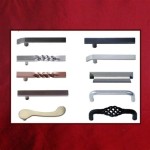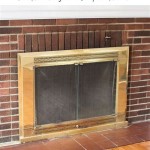Wood Burning Fireplace Insert With Blower: Enhancing Efficiency and Comfort
Wood burning fireplace inserts with blowers represent a significant upgrade for homeowners with existing masonry fireplaces. These inserts are designed to fit directly into an existing fireplace opening, transforming an often inefficient and drafty fireplace into a powerful and effective heating source. Unlike open fireplaces, which can lose a substantial amount of heat up the chimney, inserts are closed combustion systems that maximize heat output and minimize energy waste. The integrated blower further enhances this efficiency by circulating heated air into the room, providing even and consistent warmth.
The primary function of a wood burning fireplace insert is to improve the heating performance of an existing fireplace. Open fireplaces are notoriously inefficient, with a significant portion of the heat generated escaping up the chimney. This is due to the natural draft created by the chimney, which pulls warm air out of the room and replaces it with cold air from outside. Fireplace inserts, on the other hand, are designed to mitigate this problem by creating a closed combustion chamber. This allows for more complete burning of the wood, extracting more heat from the fuel. The blower then forces this heated air out into the room, effectively distributing the warmth throughout the living space. This results in a more comfortable and energy-efficient heating solution compared to traditional open fireplaces.
Beyond increased efficiency, wood burning fireplace inserts with blowers also offer enhanced safety features. Open fireplaces can pose several safety hazards, including the risk of sparks and embers escaping into the room, the buildup of creosote in the chimney, and the potential for carbon monoxide poisoning. Inserts address these concerns by containing the fire within a closed chamber, significantly reducing the risk of sparks and embers escaping. The sealed design also helps to control the combustion process, minimizing the production of creosote and reducing the risk of chimney fires. Furthermore, many modern inserts are equipped with safety features such as carbon monoxide detectors and automatic shut-off mechanisms, providing added peace of mind for homeowners.
Choosing the right wood burning fireplace insert with a blower involves careful consideration of several factors, including the size of the fireplace opening, the heating requirements of the space, the desired aesthetic style, and the budget. It's crucial to accurately measure the fireplace opening to ensure a proper fit. The insert should be sized appropriately for the area to be heated, taking into account factors such as insulation levels and climate. A range of styles and finishes are available to complement different home decors. Finally, budget considerations should be factored in, including the initial cost of the insert, installation expenses, and ongoing maintenance requirements.
Improved Heating Efficiency and Reduced Energy Costs
The core benefit of a wood burning fireplace insert with a blower is its ability to significantly improve heating efficiency. Open fireplaces typically have an efficiency rating of only 5-15%, meaning that the vast majority of the heat produced is lost up the chimney. Fireplace inserts, on the other hand, can achieve efficiency ratings of 70-80% or even higher. This dramatic improvement is due to the closed combustion chamber, which allows for more complete burning of the wood and prevents the direct escape of heat up the chimney. The integrated blower further enhances efficiency by circulating heated air into the room, preventing stratification and ensuring that the warmth is evenly distributed. This translates to lower energy costs and a more comfortable living environment.
The superior heating efficiency of a fireplace insert compared to a traditional fireplace stems from several key design features. First, the enclosed combustion chamber restricts the amount of air entering the firebox, allowing for more controlled and complete combustion. This results in more heat being extracted from the wood and less unburned fuel being wasted. Second, the insulated firebox helps to retain heat within the insert, preventing it from radiating into the surrounding masonry. This allows the insert to heat up more quickly and maintain a higher operating temperature. Finally, the blower forces heated air out into the room, preventing it from being trapped near the ceiling. This ensures that the heat is effectively distributed throughout the living space, providing consistent and comfortable warmth.
The impact of using a wood burning fireplace insert with a blower on energy costs can be substantial. In homes that rely heavily on traditional fireplaces for heating, the switch to an insert can result in significant savings on heating bills. The insert's higher efficiency means that less wood is required to produce the same amount of heat. Additionally, the improved heat distribution can allow for the thermostat to be turned down, further reducing energy consumption. While the initial investment in a fireplace insert can be significant, the long-term savings on energy costs can often offset the initial expense, making it a worthwhile investment for homeowners seeking to reduce their energy footprint.
Enhanced Safety Features and Reduced Environmental Impact
Beyond improved heating efficiency, wood burning fireplace inserts with blowers also offer enhanced safety features and a reduced environmental impact compared to traditional open fireplaces. Open fireplaces can pose several safety hazards, including the risk of sparks and embers escaping into the room, the buildup of creosote in the chimney, and the potential for carbon monoxide poisoning. Inserts address these concerns by containing the fire within a closed chamber, significantly reducing the risk of sparks and embers escaping. The controlled combustion process also minimizes the production of creosote, reducing the risk of chimney fires. Furthermore, modern inserts are often equipped with safety features such as carbon monoxide detectors and automatic shut-off mechanisms, providing added peace of mind for homeowners.
The enclosed combustion chamber of a fireplace insert plays a crucial role in enhancing safety. By containing the fire within a sealed unit, the risk of sparks and embers escaping into the room is significantly reduced. This is particularly important in homes with young children or pets, who may be more vulnerable to burns. The sealed design also helps to prevent drafts from blowing embers out of the fireplace and into the surrounding area. Additionally, the controlled combustion process minimizes the production of creosote, a flammable substance that can build up in the chimney and pose a serious fire hazard. Regular chimney cleaning is still necessary, but the reduced creosote buildup can help to extend the time between cleanings.
The use of a wood burning fireplace insert with a blower can also contribute to a reduced environmental impact compared to traditional open fireplaces. Open fireplaces are often inefficient and produce a significant amount of smoke and pollutants. Inserts, on the other hand, are designed to burn wood more completely, reducing the amount of smoke and emissions released into the atmosphere. Many modern inserts are also equipped with catalytic combustors, which further reduce emissions by burning off unburned gases and particles. By switching from an open fireplace to an insert, homeowners can reduce their carbon footprint and contribute to cleaner air quality.
Proper Installation, Maintenance, and Safe Operation
To ensure optimal performance, safety, and longevity, a wood burning fireplace insert with a blower requires proper installation, regular maintenance, and safe operation. Installation should always be performed by a qualified professional who is familiar with local building codes and safety regulations. This ensures that the insert is properly connected to the chimney, adequately sealed, and safely vented. Regular maintenance is essential to keep the insert functioning efficiently and safely. This includes cleaning the chimney regularly to remove creosote buildup, inspecting the insert for any signs of damage or wear, and lubricating moving parts as needed. Safe operation involves following the manufacturer's instructions carefully, using only approved fuels, and monitoring the insert for any signs of malfunction.
Proper installation of a wood burning fireplace insert is critical for ensuring safe and efficient operation. A qualified installer will inspect the existing chimney to ensure that it is in good condition and properly sized for the insert. They will also ensure that the insert is properly connected to the chimney using a stainless steel liner that is sized to match the insert's flue outlet. The liner is essential for preventing creosote buildup and ensuring proper drafting. The installer will also seal the insert to the fireplace opening to prevent air leaks and ensure that all combustion gases are vented properly. Improper installation can lead to serious safety hazards, including carbon monoxide poisoning and chimney fires.
Regular maintenance is essential for keeping a wood burning fireplace insert with a blower functioning efficiently and safely. The most important maintenance task is regular chimney cleaning. Creosote buildup in the chimney can pose a serious fire hazard, and regular cleaning is necessary to remove this flammable substance. The frequency of chimney cleaning will depend on the amount of wood burned and the type of wood used. The insert itself should also be inspected regularly for any signs of damage or wear. The door gasket should be checked to ensure that it is sealing properly, and any damaged or worn parts should be replaced promptly. The blower should also be lubricated periodically to ensure smooth and quiet operation.
Safe operation of a wood burning fireplace insert requires following the manufacturer's instructions carefully. Only approved fuels should be used in the insert. Burning unseasoned wood, trash, or other materials can produce excessive smoke and creosote, increasing the risk of chimney fires. The insert should be monitored closely while in operation, and any signs of malfunction should be addressed immediately. If the insert is producing excessive smoke or if the blower is not working properly, the fire should be extinguished and the insert should be inspected by a qualified technician. Carbon monoxide detectors should be installed in the home to provide an early warning in the event of a carbon monoxide leak.

Osburn Matrix 2700 Wood Insert

Ventis Hei240 Wood Burning Insert Rockford Chimney

T25i Timberwolf Wood Fireplace Insert Hearth Stove Patio

Napoleon Epi3 Wood Fireplace Insert Inserts By Rockford Chimney

Inserts Wood Osburn 2200 Insert With Blower Ob02201

30 Ruby Contemporary Intellifire Touch Direct Vent Fireplace Insert Blower And Remote Electronic Ignition Majestic

35 Ruby Traditional Intellifire Touch Direct Vent Fireplace Insert Blower And Remote Electronic Ignition Majestic

Ventis Wood Burning Fireplace Insert With Blower Hei170 Hvacdirect Com

Ventis Hei240 Fireplace Insert With Blower

Napoleon S Series Wood Fireplace Insert Base Unit S25i Fireplaces Usa








